The word most commonly used to describe the occurrence of small, solid, ceramic figurines is “ubiquitous,” as they are found everywhere in Mesoamerica. Throughout the Preclassic/Formative period (1500 BCE-250 CE) archaeological sites, figurines such as the objects in this display have been recovered in large numbers. While the find sites for these five figurines is unknown, a comparative analysis of the forms and styles clearly suggests that these were all recovered from Olmec culture sites of the Gulf Coast region or from strongly Olmec-related cultures such as those of Central Mexico.
While some scholars suggest that the function and meaning of Preclassic/Formative period figurines has never been fully determined, many scholars have presented evidence that the figurines may have had numerous and different uses. In most areas of Mesoamerica, the figurines are primarily found in household middens and trash pits, from all levels of society, and figurines are also found in burials in Central Mexico. Because the majority of the figurine bodies have been clearly identified as young females, some have suggested that the figurines functioned simply as toys or dolls, while other scholars have suggested that figurines may have been used in female life-cycle rituals related to menstruation, marriage, and childbirth.
An important clue to purpose and meaning is that the vast majority of Preclassic/ Formative period figurines are recovered in fragmentary form, broken both at weak points like the neck and arms as well as at the more structurally sound, middle part of the torso. This suggests that the figurines were purposefully broken, and such purposeful breakage is associated with use in rituals. Excavations at Maya and Aztec sites indicate that the figurines were likely used in healing rituals, as they were found in close proximity to habitation rooms with deposits of household offerings and sacrifices as well as with steambaths, which were associated with healing rituals. Some ethnohistoric accounts also relate that ceramic figurines served as religious items or idols used in village agricultural rites, but other ethnohistoric accounts from later Mesoamerican and Mestizo (mixed Hispanic and indigenous) cultures, as well as archaeological evidence from other ancient Mesoamerican cultures, suggests that many different forms of figurines were used by priests, physicians, and/or sorcerers in healing rituals to cure disease, and that figurines were also used by commoners in rituals both to protect from and prevent illnesses in children.
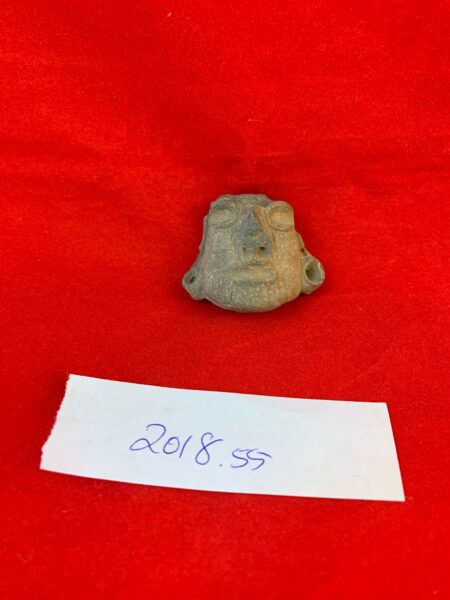
Olmec cultures
Preclassic/Formative period (1000-300 BCE)
Ceramic, L. 4.5 cm x W. 2 cm x H. 3.8 cm
BFPC collection #2018.55
This figurine head has a square jaw, a triangular nose with punched-in nostrils, and large earspools with central holes that suggest high status. The large eyes and the smaller mouth were formed with a pellet of clay that has been pressed in the center to create an indented line. The figure may have been bald, or the hair/head piece may have been broken off and lost. These features all correlate well with figurines made by the Olmec culture.
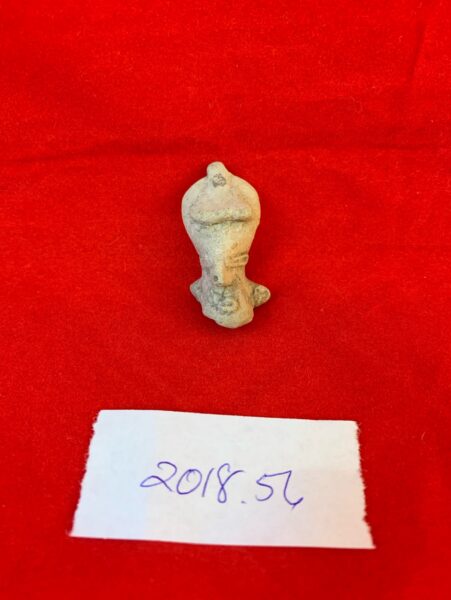
Central Mexican cultures
Early Preclassic/Formative period (1500-1000 BCE)
Ceramic, L. 2.1 cm x W. 2 cm x H. 4.4 cm
BFPC collection #2018.56
This figurine head has been pinched in the middle to create a figure-eight shape. The forehead is adorned with a hairstyle or headdress in a funnel shape, and the figure wears ear spools that show its high status. The face is formed by thin, indented eyes, a small nose, and a small, indented, oval mouth. The unusual head shape and hairstyle/headdress identify this figurine as likely being from the Valley of Mexico (also known as Central Mexico), as these features resemble those of the Early Formative Type C figurines made there.
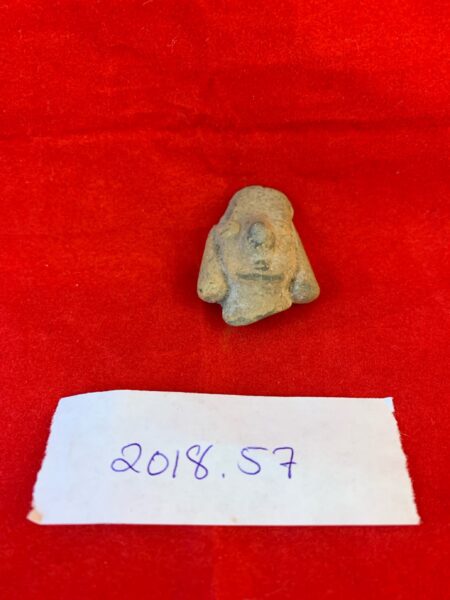
Olmec cultures
Preclassic/Formative period (1000-300 BCE)
Ceramic, L. 3 cm x W. 2.2 cm x H. 4.1 cm
BFPC collection #2018.57
This small, handmade head wears a common Olmec hairstyle that features a distinctive large bun in the middle of the head, while long pieces extend down the sides, like a dog’s ears. The coffee bean-shaped eyes, small rounded nose, flat chin, and small mouth with pursed lips all also resemble Olmec figurines.
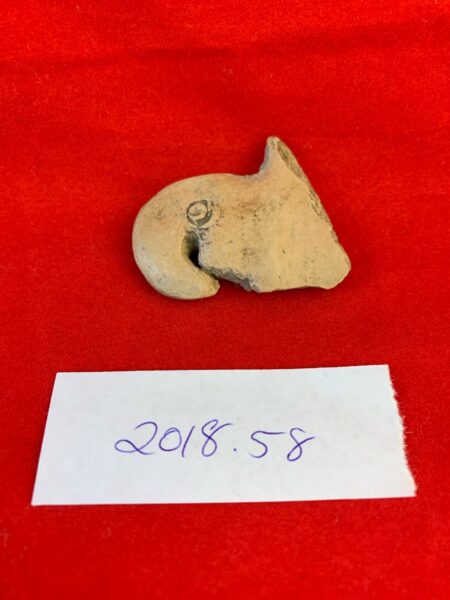
Central Mexico
2500 – 1000 BCE
Preclassic/Formative period
Ceramic, L. 4.9 cm x W. 1.4 cm x. H. 3.7 cm
BFPC collection #2018.58
While the rest of the figurine heads in this display are anthropomorphic, this ceramic head is zoomorphic, which is less common in ancient Mesoamerica. The form appears to represent a bird’s head with a large, hooked beak and circular eyes, and the flat form is best seen in profile. Most ceramic animal heads were made as attachments to effigy vessels, as decorations or handles.
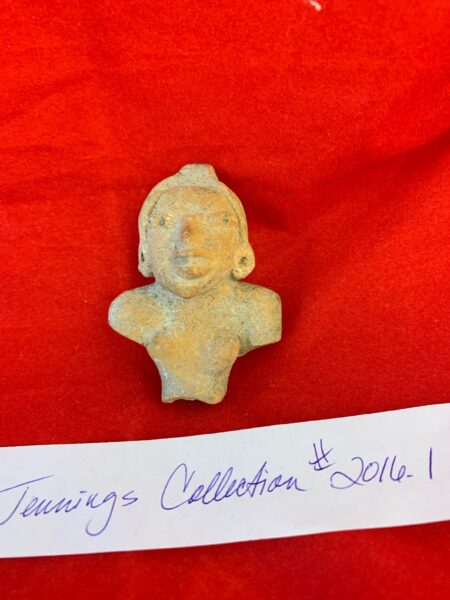
Olmec cultures
Preclassic/Formative period (1000-300 BCE)
Ceramic, L. 3.7 cm x W. 2 cm x H. 4.9 cm
Jennings collection #2016.1
This figurine is easily identifiable as female because the upper torso is still intact, showing modestly rounded breasts and the top of a pinched waist. Like the other human figurines in this display, the eyes were formed by a pellet of clay that was then indented, but unlike the other figurines, this figurine also has punched pupils. The inverted-U hairstyle or headdress has a slightly squared bump in the center, which is commonly found on Olmec figurines, and it may represent a hairstyle or a wrapped turban.
For more information, you may contact the researcher(s) noted in the title of this exhibit entry, or Dr. Billie Follensbee, the professor of the course, at BillieFollensbee@MissouriState.edu

